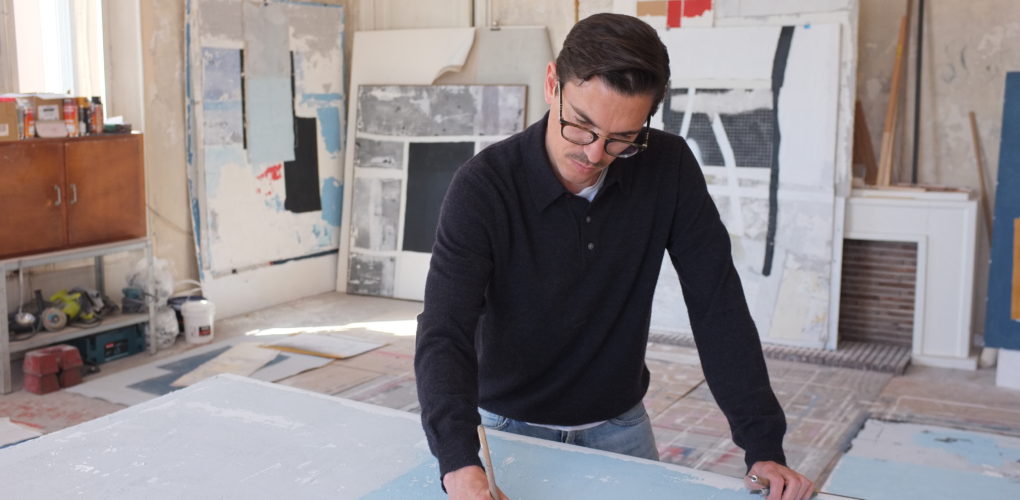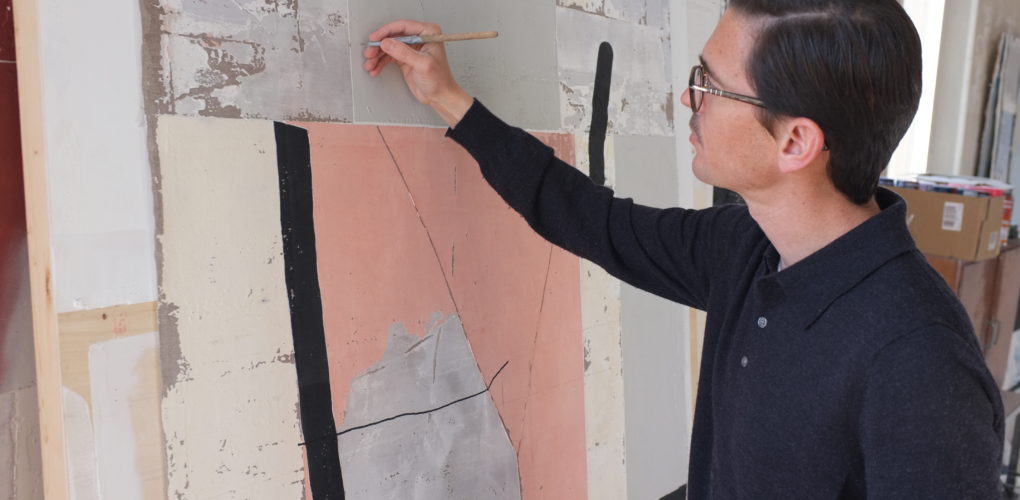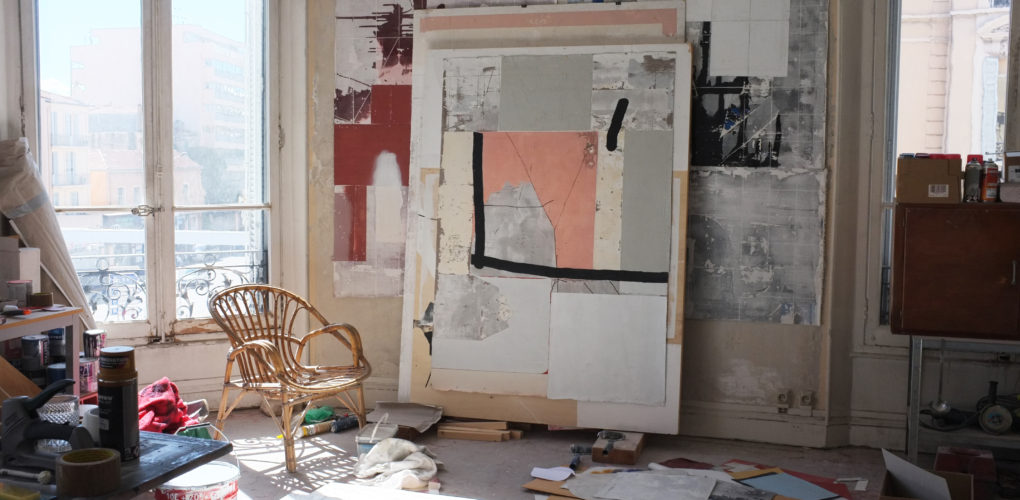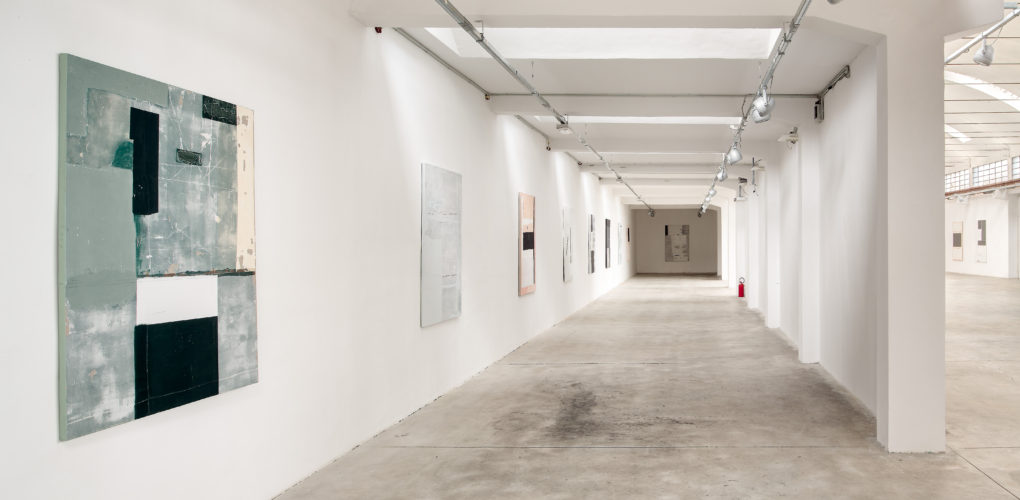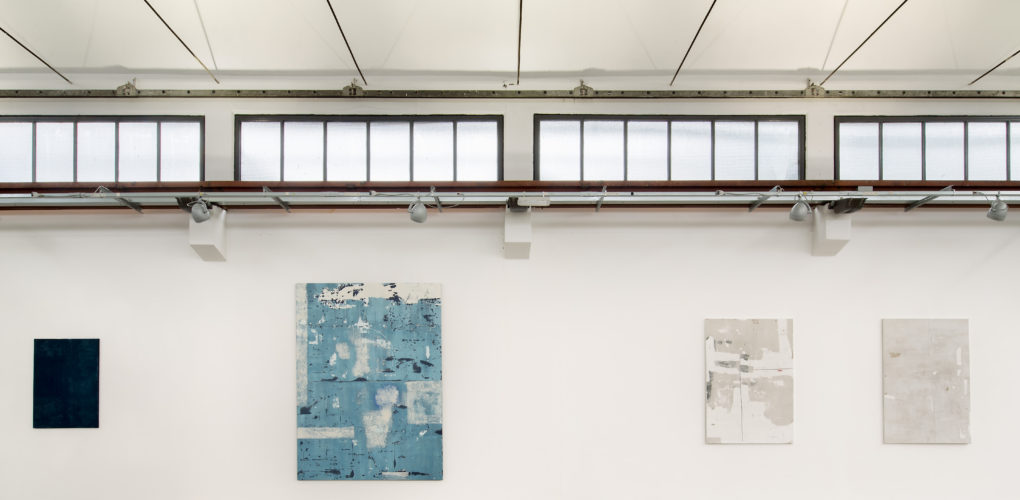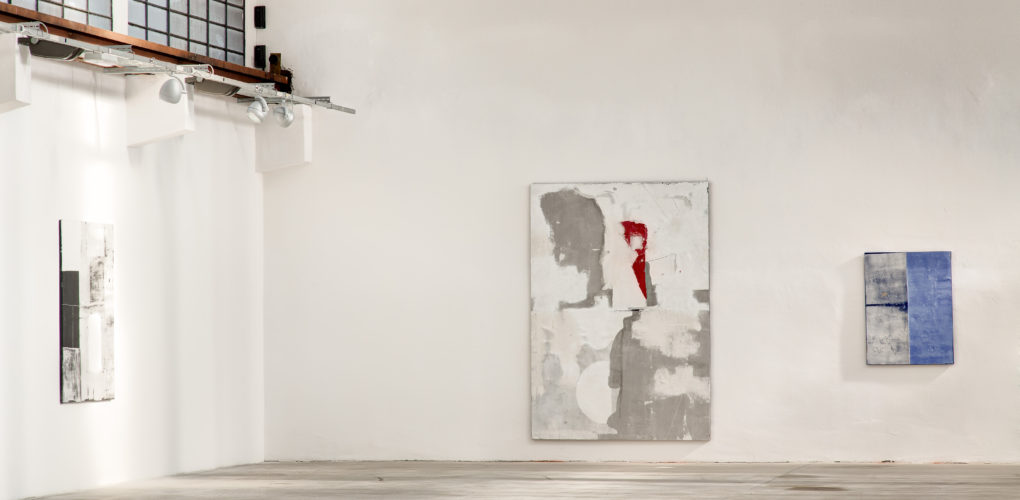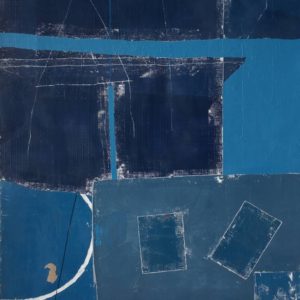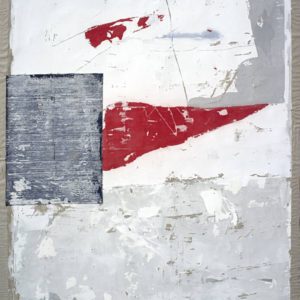Inside the Studio
Antoine Puisais’ layered paintings are deconstructed abstracts
What are the major themes you pursue in your work?
In my work, the notion of the unfinished is essential. These are vestiges of painting, dug up fragments, and results of an almost archaeological search. Before anything else, it’s important to understand my system of operating. I use matrices to transfer onto canvas the results of these researches. These matrices are panels of plywoods that act as stamps.
This process of “archaic printing” is all messed up. So, each time, a lot of accidents may occur. Each time that I tear away the canvas of its support, I then discover the painting. From that process results a procession of trial and error. Paintings are then repaired, restored, and recomposed from these fragments of images.
I act in a logic of construction, destruction, and renovation. For me, the act of painting is always a war between what you show and what you hide. It’s a reflection of an interiority and, in this binary act of adding and subtracting, I am interested in what resists.
How did you first get interested in your medium, and what draws you to it?
To be perfectly honest, at a moment of my life, a part of me broke. Since then, I decided to dedicate my time to repairing what was broken. So my work is mostly driven by this urgent need of finding links, building bridges, and creating unity between various split up parts.
How has your style and practice changed over the years?
My painting style has fortunately evolved a lot since I began in 1998, but I notice with hindsight that the fundamental themes are always the same. I believe that the artist’s main purpose is to free oneself from what is not necessary.
Can you walk us through your process? Do you begin with a sketch, or do you just jump in? How long do you spend on one work? How do you know when it is finished?
I spend a lot of time in the studio. I move the canvas residues, which sprinkle the ground until a connection is made. I take the pictures that I’m going to work on in image processing software and process these digital images as sketches. Later, I will transform these digital images into tangible paintings. Painting takes time, and there are no shortcuts. Sometimes it’s easier, and sometimes harder. Finally, I create a problem that I’m then going to solve with paint.
Who are some of your favorite artists, and why?
Christopher Wool because his work looks simple but at the same time reflects all the hesitations and re-touchings peculiar to the act of painting. Jean Michel Basquiat, because in my early years he showed me that freedom exists in painting. Donald Baechler, because his childhood iconography is at the same time personal and universal. Cy Twombly, because of the impulses, subtle movements, and pure poetry of his work. Concerning younger artists, I like Richard Aldrich, Brent Wadden, David Ostrowski, Erik Lindman, Doris Salcedo, Carol Bove, Joe Bradley, Jonas Wood, Sergej Jensen, and a lot more.
What was the best advice given to you as an artist?
Find space, time, and light and realize your astonishments.
